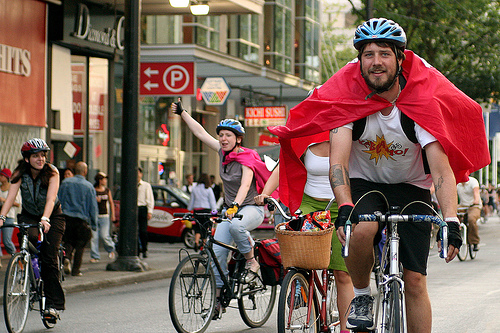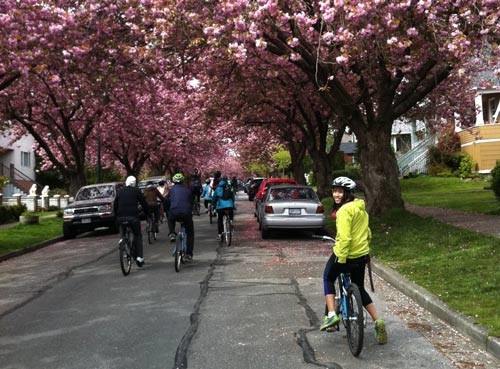Green thinking in cities, Part 3: Curitiba
Curitiba, Brazil, has recently become a major influence on sustainable transportation in cities, but it was in 1972 that they introduced their first pedestrian street (video). Implemented within three days, the quick street closure stirred up controversy but resulted in a loved public space — a process familiar in many of its modern counterparts. That was just the beginning for this South American metropolis.
While Vancouver has been busy building and expanding expensive metro systems, Curitiba has been attracting incredible ridership to their highly efficient and frequent Bus Rapid Transit system.
The bus system of Curitiba, Brazil, exemplifies a model Bus Rapid Transit (BRT) system, and plays a large part in making this a livable city. The buses run frequently — some as often as every 90 seconds — and reliably, and the stations are convenient, well-designed, comfortable, and attractive. Consequently, Curitiba has one of the most heavily used, yet low-cost, transit systems in the world. — Urban Habitat
Curitiba’s BRT behaves like a surface subway, but the system is faster and cheaper to build, and cheaper to maintain. The health, environmental, and economic benefits of having an inexpensive, attractive public transportation system are numerous and valuable.
The popularity of Curitiba’s BRT has effected a modal shift from automobile travel to bus travel. Based on 1991 traveler survey results, it was estimated that the introduction of the BRT had caused a reduction of about 27 million auto trips per year, saving about 27 million liters of fuel annually. In particular, 28 percent of BRT riders previously traveled by car. Compared to eight other Brazilian cities of its size, Curitiba uses about 30 percent less fuel per capita, resulting in one of the lowest rates of ambient air pollution in the country. Today about 1,100 buses make 12,500 trips every day, serving more than 1.3 million passengers — 50 times the number from 20 years ago. Eighty percent of travelers use the express or direct bus services. Best of all, Curitibanos spend only about 10 percent of their income on travel — much below the national average. — Urban Habitat
Curitiba’s well-designed system has inspired cities like Bogotà, Colombia, who built their own BRT and branded it TransMilenio, elevating it beyond the typical perception of buses. Here’s a video on that.
Thanks to Streetfilms for both.
 This daily green blog challenge is in celebration of David Suzuki’s 75th birthday, supporting the David Suzuki Foundation. Please help me out by sponsoring me online now.
This daily green blog challenge is in celebration of David Suzuki’s 75th birthday, supporting the David Suzuki Foundation. Please help me out by sponsoring me online now.
Note: I am writing solely on my own behalf, and do not claim to represent the David Suzuki Foundation or its views here.


